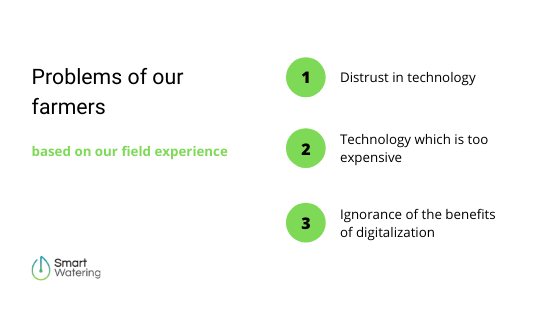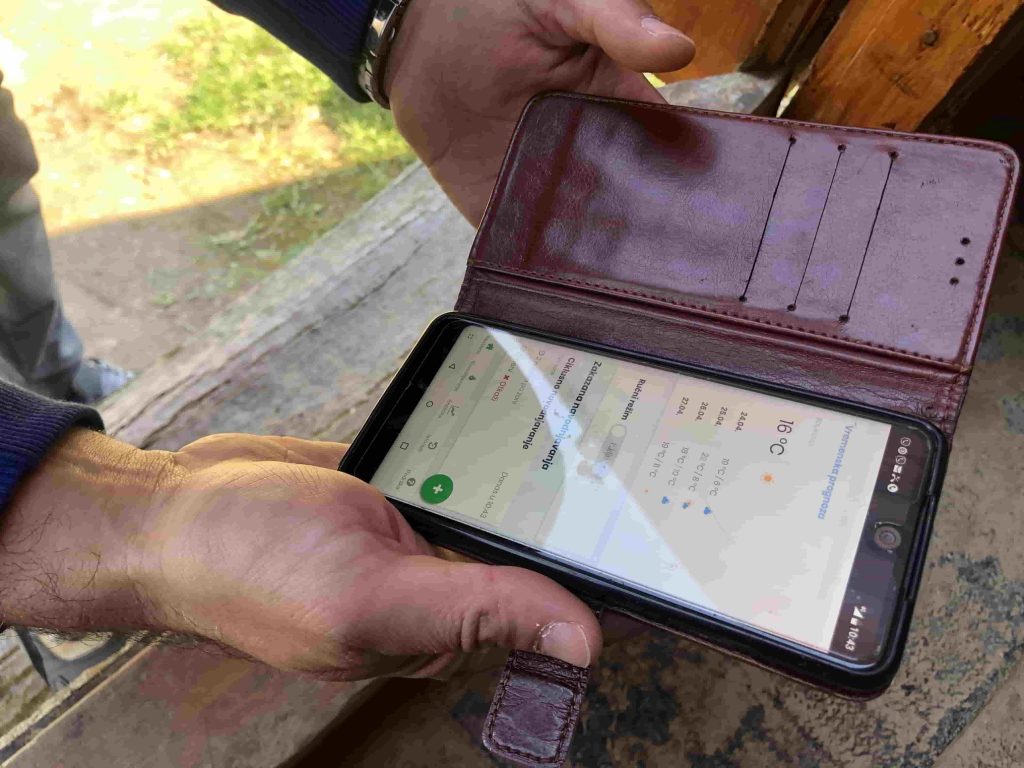News archive - Digital agriculture is a lifeline for the planet, but also for the pocket
Until recently, agriculture, at least in WBC, has resisted technological progress and digitalization.
It is important to know that so-called digital agriculture is no longer a desire, but a necessity. We face great challenges in the next 30 years:
- Climate changes
- Population growth
- Increasing need for food
- Environmental and health sustainability
- Limited natural resources
- Economic recession
The efficiency of agriculture needs to be increased by almost 70% if we want to respond to these challenges effectively.
Experienced agricultural production is no longer enough
As you already know, our farmer likes to visit his orchard. He likes to go to his field, put his hands on his hips and responsibly assess what he needs for sowing and a successful harvest.
He often prays to the saints for it to (not) rain. Crops can be leafy, sometimes there are plenty, other times there are not.
To use the experience of his ancestors and estimate the amount of water and fertilizer. The farmer knows what his land needs.
But that is no longer enough.
Crop quality depends on many factors that are often difficult to predict at all:
- Precipitation and drought
- climate changes,
- changes to the physical and chemical characteristics of soil,
- required fertilizer…
Then, there is irrigation. It depends on the soil, precipitation and the species being grown. It also depends on the desired yields.
Without technology, this data is calculated manually. Then you have to make decisions responsibly and surrender to a higher power when you expect yields. Chock the years up to “good” and “bad”.
Technology allows almost every year to be a good one. Or at least it gives us the opportunity to react to poor conditions, on time.
What prevents our farmers from investing in digitalization
Our region is especially lagging behind in the digitalization of agriculture. For example, in America, almost 80% of farmers uses some digital technology in agriculture.
In the European Union, that percentage is up to 24%, while in our country it is only 3%.
We couldn’t help but wonder why. According to our experience from the field, our farmers rarely decide on digital technologies in agriculture for the following reasons:
- They think it is too expensive compared to available land
- Ignorance of technology therefore doubt
- Ignorance of the benefits of technology

Over 80% of arable land is in the hands of small farmers. Only about 16% is in the hands of companies.
Therefore, the solution is to improve small farms and raise their competitiveness.

What inspires hope is the fact that there are currently 3% of young farmers and entrepreneurs in Serbia.
Yes, that number is extremely small but it is growing by the year. Young people contribute the most to the influence of technology in agriculture. They were practically born with a mobile phone in their hand.
In addition, we have hard-working and young IT professionals who are trying to combine technology with agriculture, thus creating an increasing number of AgTech (agriculture technology) startups.
Technology allows almost every year to be a “good” one.
Or, at least to influence bad conditions in a timely manner. With this in mind, we can say that currently 3 technologies in the field of digital agriculture have the greatest market potential:

1. Sensor technology and data monitoring technology
Every serious farmer knows how important measurements and sensors are. It is necessary to measure:
- pH of the soil,
- EC values,
- moisture,
- biochemical composition of soil…
And, based on that, make the right decisions and react in a timely manner. A delayed reaction can affect year-round crops.
In addition, one of the key principles of digitization is timely access to a huge amount of data, as well as its analysis.
Inputs and data monitoring in agriculture enables precise decision making.
- You know how much fertilizer you’ve used,
- percentage of moisture,
- return on investment,
- how much raw material will be needed
- time and money savings.
No more speculation.
2. Precision agriculture
Precision agriculture is the timely performance of jobs with high productivity, low labor costs and a large amount of accurate data.
It is based mainly on GPS tracking of mechanization, satellite field imaging and variable-rate technology (VRT).
Developments in this domain prove the obsolescence of observing the field as a whole. Precise agriculture implies the division of fields into smaller units and thus more precise treatment.
3. Smart irrigation
Rainwater does not satisfy the needs of plants. Since we will not beg the heavens for rain to fall, there is a great need for smart solutions in the field of irrigation systems.
One of the current solutions is drip irrigation. It optimally moisturizes the root and saves water.
In addition, it solves the problem with fertilization because drip irrigation systems also enable fertigation, i.e., irrigation with fertilizer solutions.
The problem with traditional drip irrigation is that it requires a frequent presence. For this reason, there is a need for smart irrigation.
Smart Watering is a combination of all 3 technologies of the future
Even when you automate the drip irrigation system, you still need to constantly visit the orchard or the field. You have to monitor weather conditions, visit the laterals in case a drip nozzle has loosened…
If you live in a city and maintain a large area, in parallel, this can take a long time.
Smart Watering is a great irrigation solution because it actually represents a combination of 3 technologies for agriculture of the future:
- Smart sensor technology – measures moisture, water flow, pH and EC values, at the same time
- Precision agriculture and data tracking – tracks everything via the app on your phone and your computer. You don’t have to make constant visits.
- Smart irrigation – you place only one device on an existing station and manually control irrigation, fertilizer inflow, you have access to all data.
Advantages of the Smart Watering system:
- The root does not experience shock – you control the irrigation. If you notice sudden changes in soil moisture, you can respond in 3 clicks, via your phone. No need to rush to the orchard or to conduct daily checks.
- Reduced risk of fertilizer leaching below the root range – by precisely managing drip irrigation, you leave most of the fertilizer in the topsoil.
- Save up to 30% water – you are already saving water by drip irrigation. With remote control, you will also experience additional savings.
- Save time – no need to go to the orchard all the time.
- You will increase income up to 1000 EUR per ha – when you can manage all parts of agricultural production, precisely through the application, costs decrease (starting from raw materials)

How does the system work?
- Place the device on an existing irrigation system
- Install the application
- Track, measure and count savings and profits.
Source of this news is a blog of Smart Watering Solutions which are developing software and controller for smart irrigation, based in Serbia.
- General/no specific focus
- International; Other
- Serbia
- Western Balkans
- Agricultural Sciences
- Engineering and Technology
Entry created by Admin WBC-RTI.info on June 15, 2020
Modified on June 15, 2020
